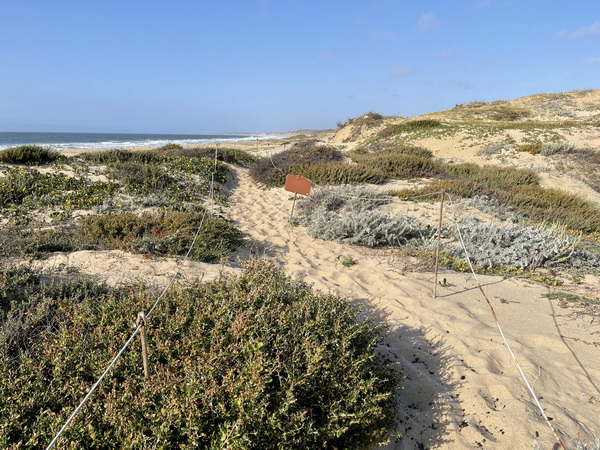Examples of fences, boardwalks, & signs protecting sensitive areas
Fred Watson, PhD.
Copyright (C) F. Watson. Last updated: 13 Jan 2023.
Set A
For longer-term protection of sensitive species and habitats in open environments, I think we should take inspiration from the photos below. The best fencing is the "post and cable" type used by State Parks and BLM. It has been shown to work very well in many places in our region. It is sourced from vendors in the electrical industry; I have all the details (thanks to State Parks staff). It's not cheap. But it's the cheapest solution that actually works.
 |
||
Set B
For longer-term protection of sensitive species in open sandy habitats, we should avoid the examples below. They should only be used for temporary short-term construction periods, they should be removed immediately after construction, and they should not be used in spring between the germination and seeding times of rare annual plants.
Monterey Gilia is adapted to relatively open areas with a coarse, mobile sandy substrate. The orange plastic fences illustrated below potentially work against these conditions by blocking the wind, creating a more sheltered environment conducive to a different substrate, a different assemblage of non-native plants, and herbivores that eat Gilia flowers.
|
This photo is from Dec 2022 at one of the Monterey Gilia areas that are part of The Dunes development. There are several problems with this situation: (1) the fence excludes a substantial amount of the originally occupied Gilia area mapped in the DEIR, (2) the fence will harbor Gilia threats such as herbivores and competitive plants, and (3) there's ice plant and a Torrey Plant inside the fence. |
This photos is from a few years ago at a Monterey Gilia mitgigation area associated with the East Garrison development. The mitigation failed. There are no Gilia here. All that's left is an ugly broken fence that facilitates species adapted to the sheltered environment that the fence provides (e.g. sky lupnie, and non-native grasses). |